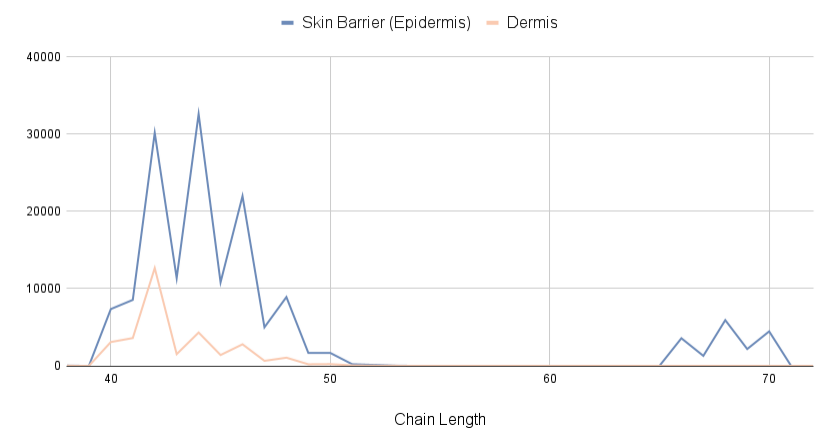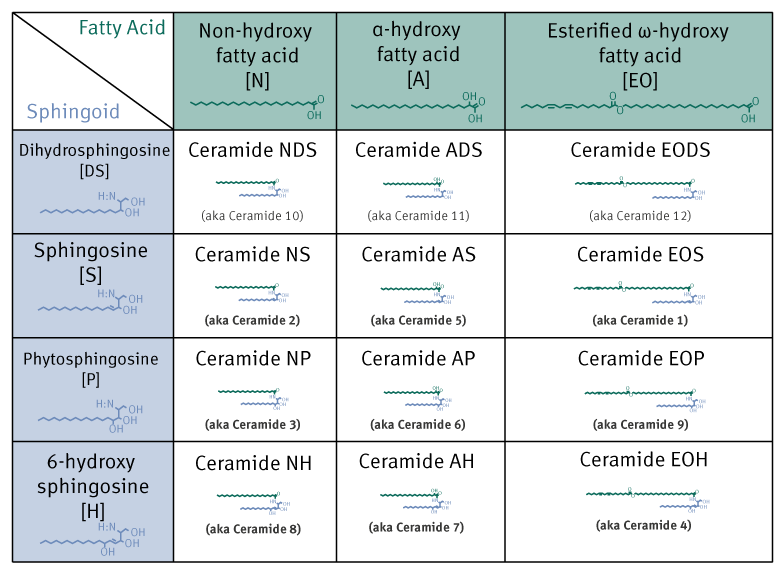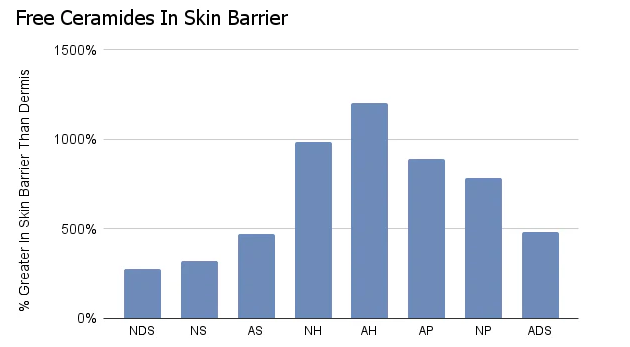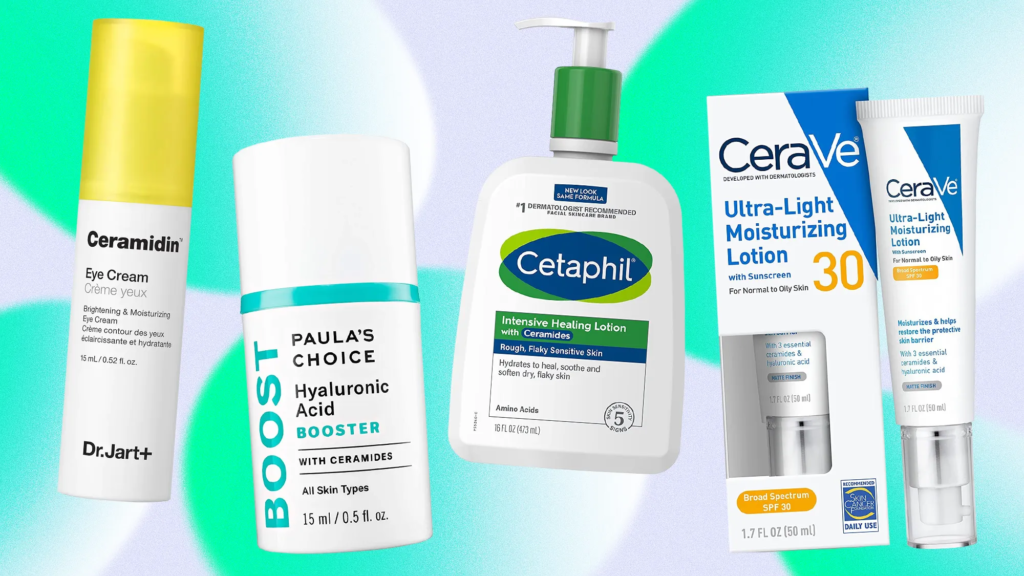Ceramides are a class of amide compounds formed by the dehydration of long-chain fatty acids and sphingomyelin. 40% to 50% of the sebum in the stratum corneum consists of ceramides, which are the main part of the intercellular matrix, and play an important role in maintaining the balance of moisture in the stratum corneum. There are many ceramide benefits used for skin care.
Simply put, the stratum corneum is a wall, the epidermal cells are the bricks, and the ceramides are the cement that stabilises the bricks. The wall serves the simple purpose of not only helping the skin lock in moisture, but also repairing the skin’s lipid barrier.

Figure. Free Ceramides In Dermis And Skin Barrier (Epidermis)
More information abour ceramide, please visit Ceramide Introduction
At least nine kinds of ceramides have been identified in the stratum corneum (SC) of human skin.
 Figure. The 12 Sub-Classes of ceramides that make up your skin
Figure. The 12 Sub-Classes of ceramides that make up your skin
Different ceramides benefits vary, this article will show you.
- Ceramide benefits for repairing skin barrier
Ceramide 3 (NP) is one of the most abundant ceramides and the one that is most easily lost. When ceramide 3 is lacking, the structure of intercellular lipids cannot be maintained. Therefore, supplementation of ceramide 3 can repair damaged intercellular lipids and strengthen the keratin barrier. The diversity of ceramides in the stratum corneum gives them unique properties in stratum corneum structure and cohesion, resulting in the skin barrier function of the stratum corneum. The composition of ceramides in skin lesions of patients with skin barrier dysfunction is different from that in normal skin. In the former, the total content of ceramides is significantly reduced, with ceramide 1 and ceramide 3 showing the most significant reduction. While the content of cholesterol, on the contrary, is significantly increased. And the change in the ratio of ceramides to cholesterol may be the reason for the abnormalities of the skin’s physiological function.

Figure . Percent increase of free ceramides in the skin barrier vs the dermis.
- Ceramide benefits for skin moisturizing
Conventional moisturizers achieve moisturizing by retaining moisture on the surface of the skin. However ceramides exert their effect by reducing TEWL and promoting skin barrier repair, among other physiological functions. As an important physiological lipid in the stratum corneum, ceramide forms a mesh structure in the stratum corneum; it improves the skin’s electrical conductivity and water locking function. Secondly, ceramide increases the thickness of the stratum corneum, improves the skin’s ability to hold water, and increases the skin’s elasticity. In addition, ceramide reduces skin inflammation, promotes skin barrier repair, and maintains stable skin function. In dry skin lesions, transepidermal water loss (TEWL) was significantly correlated with ceramide 3.

- Ceramide benefits in skincare products
Currently, ceramides are increasingly used in skin care products as skin barrier repair agents, which can exogenously provide ceramides to maintain skin’s ceramide levels. Ceramide-added skin care products have a strong ability to bind water molecules, which maintains the skin’s moisture through the formation of a mesh structure in the stratum corneum. At the same time, ceramide can increase the thickness of the stratum corneum, improve the skin’s ability to hold water, reduce wrinkles, enhance skin elasticity, and delay skin aging. In addition, skincare products containing ceramides can also appropriately reduce the occurrence of inflammatory reactions and rebuild the damaged skin barrier function, which can be used as an aid in the treatment of skin barrier dysfunction-related diseases.

Figure. Skin care products with ceramides
- Ceramide dosage in skincare products
Cosmetic regulations in various countries specify safe concentrations of ceramides for use in skin care products. The U.S. Food and Drug Administration recorded in cosmetics, ceramide 3 concentration range is 0.2%; 0.2% commonly used in lipstick and face and neck care. Ceramide 2 concentration range is 0.0003 ~ 0.2%, eye creams and face and neck care products used in the concentration of 0.2%, other types of ceramide additions are mostly similar. According to the data of the Cosmetic Industry Council of Korea, the commonly used concentration of ceramide in liquid cosmetics is 0.01 g/100 g to 0.3 g/100 g, and the commonly used concentration in cream cosmetics is 0.01 g/100 g to 0.7 g/100 g. No reports on the kinetics of ceramide toxicity, acute and repeated dose toxicity, genotoxicity, carcinogenicity, reproductive and developmental toxicity were found.
In conclusion, ceramides benefits for skin care is widely applied in many kinds of skincare brands. It is an important bioactive substance that plays an important role in maintaining skin moisturizing, repairing skin barrier, and anti-aging.
Related Reading







